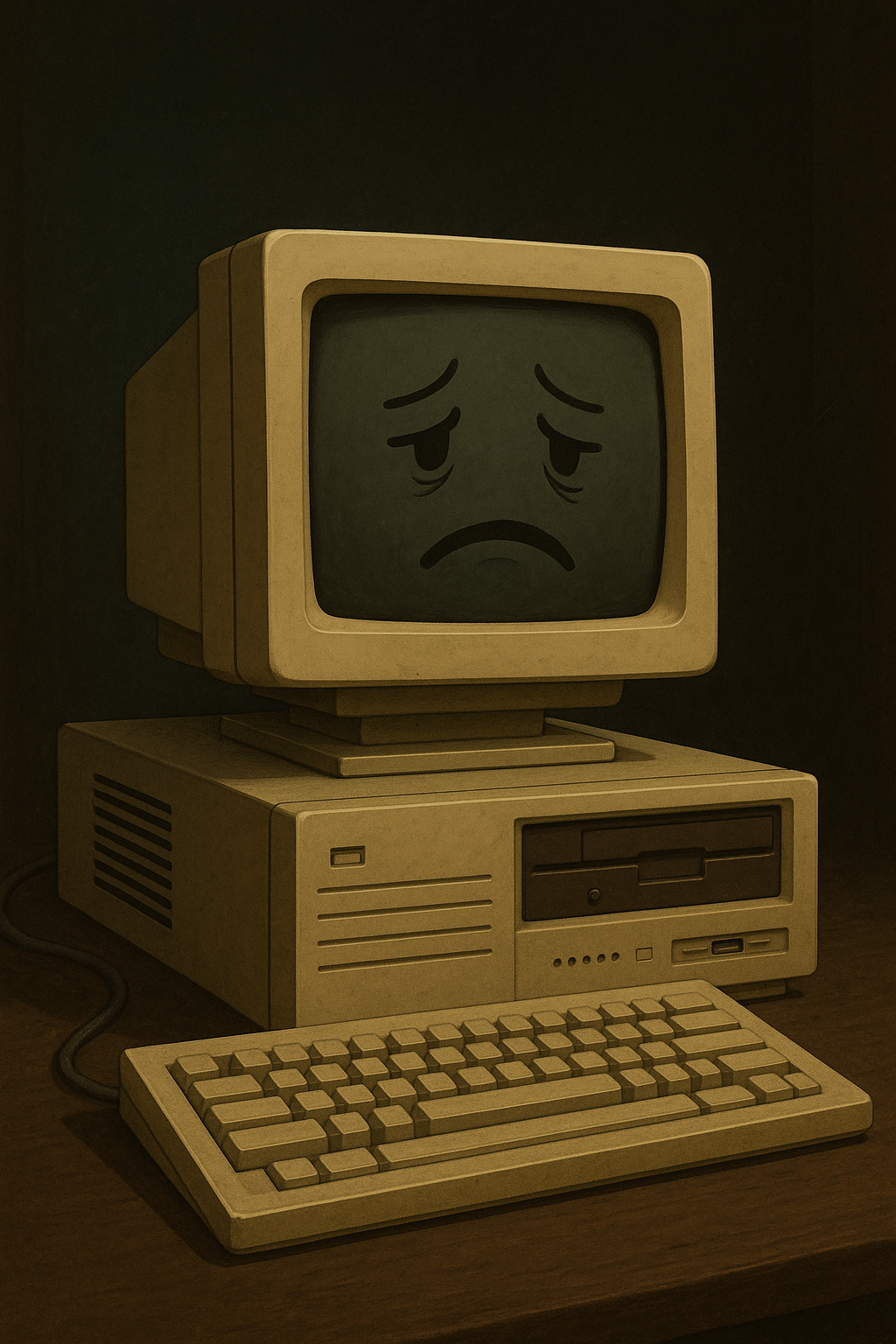Why is my computer so slow even after restarting?

Table of Contents
Some possibilities:
- Traditional HDD bottleneck; an SSD upgrade is the usual fix.
- Too little RAM for current workloads causing constant paging.
- Corrupted system files or services thrashing.
- Background sync (cloud drives) or antivirus scans.
- Thermal throttling reducing CPU clocks.
Need help? Check here: /services/computer-maintenance/
What it might be (likely causes)#
HDD bottleneck
Spinning disks keep the whole system waiting. If Disk sits near 100% active time in Task Manager, you’re IO‑bound. Upgrade context and practical wins: /posts/speed-up-old-laptop/ and aging patterns: /posts/top-problems-10-year-old-pcs/Low RAM → paging
When RAM is tight, Windows leans on the pagefile. On HDDs this is painful; even on SSDs it can stutter. A modest RAM bump or trimming autostarts usually fixes it.Corrupted system files / services
Broken indexes, stuck telemetry, or damaged components thrash the disk/CPU. A quick integrity sweep can quiet the noise.Background sync & security scans
Cloud drives, photo indexers, or AV scans can hog IO and CPU right after login. If it improves only after hours, suspect these.Thermal throttling
Dust‑clogged fins or old thermal paste force the CPU to downclock. It feels like lag because your CPU spends time below its normal speed. Thermal thinking: /posts/the-art-of-making-things-boot/
Things to check (quick, safe wins)#
Catch the bottleneck in the act
Open Task Manager → Performance. During the slowdown, note which graph is pegged (Disk, Memory, CPU). For detail, open Resource Monitor (resmon) → Disk tab and sort by Total (B/sec) to find heavy hitters.Disk health & file system
- Check SMART with your preferred tool; rising Reallocated/Pending sectors are red flags.
- Open PowerShell (Admin):
chkdsk C: /scan sfc /scannow DISM /Online /Cleanup-Image /RestoreHealth
If integrity errors persist, plan a backup before deeper repairs: /posts/simple-data-backups-without-cloud/
Trim startup & scheduled tasks
Ctrl + Shift + Esc→ Startup tab → disable non‑essentials (cloud updaters, game launchers). Also review Task Scheduler for noisy “helper” updaters. Broader tune‑up notes: /posts/why-does-my-computer-freeze-or-lag-randomly/Cloud sync & AV scan windows
Pause cloud drives temporarily and run AV scans during off‑hours. If performance returns instantly, adjust schedules/exclusions.RAM reality check
With your normal apps open, if Memory sits >85–90% and the disk churns, you’re paging. Reduce autostarts or add RAM.Thermal sanity
If the chassis is hot and fans surge, dust and paste may be due. Laptops especially benefit from a clean‑out and fresh paste after a few years. Related how‑it‑fails notes: /posts/top-problems-10-year-old-pcs/Browser and extensions
Test with a fresh profile and no extensions. Heavy extensions or 100+ tabs can make a fast PC feel slow.Consider an SSD migration
If you’re still on HDD, migrating to SSD is the biggest speed step. For bootable USB and reinstall prep, see: /posts/boot-from-usb-every-major-system/ and intake prep: /posts/prepare-for-computer-repair/
Patterns that point to the cause#
- Disk pegged at 100% → HDD bottleneck or corrupt services; upgrade/repair.
- Memory near full + disk churn → paging; trim startups or add RAM.
- CPU pegged briefly then fans roar → thermal throttling or background indexing.
- Only slow right after login → cloud sync/indexers; change schedules.
- Slow in browser only → extensions or a single misbehaving site.
If Windows Update also misbehaves alongside the slowness, stabilize that pipeline too: /posts/why-wont-windows-update-work-anymore/
When to pause and get hands‑on help#
- SMART errors, clicking drives, or repeated file system fixes.
- System still crawls after SSD/RAM upgrades and clean startups (possible deeper OS image or driver issue).
- Thermals spike to throttling quickly despite cleaning (paste/heat‑pipe issues).
Bench service—SSD migration, RAM upgrade, and a clean OS build—turns a tired PC into a useful one again.
Insight#
Speed is about removing the longest queue. On older machines that’s the disk; on newer ones it’s often memory pressure or heat. Measure, then fix the queue that dominates your day. The paradox of performance: once the worst bottleneck is gone, you notice the next one—so work top‑down, one choke point at a time.
Need a practical tune‑up, SSD migration, or RAM upgrade in Kirksville?
See /services/computer-maintenance/.